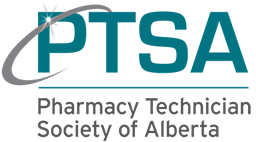What it Takes to Work to Full Scope

Earlier this week I attended the Techs in Touch Event where Meghan O’Neill, R.Ph.T. addressed how pharmacy technicians are being utilized to their full scope of practice in her community pharmacy. She began the presentation telling participants about the types of services provided at the pharmacy, and described the composition of the team – 3 pharmacists and 2 pharmacy technicians. She went on to talk about workflow processes that enable pharmacy technicians and pharmacists to work to full scope and provided ideas for how pharmacy technicians can be better utilized in community pharmacies.
At her pharmacy, pharmacists are the first point of contact for patients, most of the time. When they’re otherwise engaged, the pharmacy technicians fulfill this role. The collaboration that exists between the pharmacy technicians and pharmacists was clearly evident from how Meghan described the pharmacy’s every day processes. It was also very clear that the pharmacy team was experiencing success with the practice model they have in place.
Several key messages resonated with me during Meghan’s presentation. The first is that too often we forget that pharmacy technicians are autonomous healthcare professionals, empowered by regulations to practice under the direction of a pharmacist. More importantly – direction and supervision are not the same thing. Pharmacy technicians who engage in restricted activities under the Pharmacists and Pharmacy Technicians Profession Regulation must do so under the direction of a pharmacist. Direction is provided by a pharmacist who works in the same pharmacy as the pharmacy technician, but not necessarily on the same shift. In order to fulfill this role, the pharmacist providing direction must ensure there are policies and procedures in place that outline how direction will be provided to the pharmacy technicians. It is then the pharmacy technicians’ responsibility to ensure they practice within scope and according to the pharmacy’s procedures. This is different and much broader than the supervision required for students, interns and unregulated pharmacy employees.
This presentation also reminded me about why the regulation of pharmacy technicians was pursued in the first place. As the complexity of the pharmacy practice environment increased, we saw changing roles for pharmacists and pharmacy technicians. This meant expanded practice opportunities and it was realized that pharmacists couldn’t provide new clinical services and continue to take responsibility for all distribution related activities. The regulation of pharmacy technicians was necessary to enable pharmacists to provide the best and safest care to patients. Requiring pharmacy technicians to have minimum education and levels of competence ensures that the public is protected. There is still a place for unregulated pharmacy assistants in our profession, but utilization of unregulated employees should not be at the expense of patient safety. Direct supervision must be provided to pharmacy assistants, and we must realize that the activities they can perform are limited, despite some current practices in pharmacies across the province. Practice models that include only pharmacists and pharmacy assistants risk non-compliance with practice standards and may not allow for optimal care to be provided to patients.
One of the more sobering messages I took away from Meghan’s presentation is that pharmacy technicians are still facing a number of challenges when it comes to realizing their full potential. Historical perceptions about the role of pharmacy technicians, hiring practices, and even our own ability to take charge of the future of our profession are some of the challenges pharmacy technicians may have to overcome. The good news is that, together, we can kick start changes if we believe in our profession. Meghan implored us to know our scope and practice within it – without being asked. It’s important for pharmacy technicians to know our standards of practice and educate pharmacists and other professionals about our role by simply doing it. One way Meghan suggested we could accomplish this was by not passing things along to the pharmacist that we can handle ourselves. Depending upon the practice setting, we may not have the opportunity to do everything that a pharmacy technician is capable of, but that’s okay. In order to succeed we also need to be continually looking for new opportunities through continuing education and learning from each others successes.
So, let’s start the conversation– share your thoughts and ideas in the comments below for how we can see more pharmacy technicians utilized to full scope.
If you missed Meghan’s presentation PTSA members can access a recording of the session through the Education Courses portal.
